How can you accurately construct the inscribed circle of a right-angled triangle?
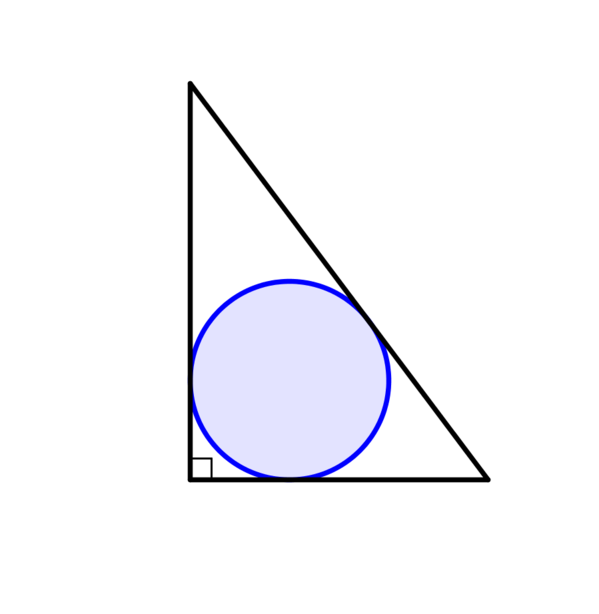
We might start by thinking about the sequence of labelled diagrams shown below (these are suggested in the suggestion section and a printable version is available here).
| Diagram | Description |
|---|---|
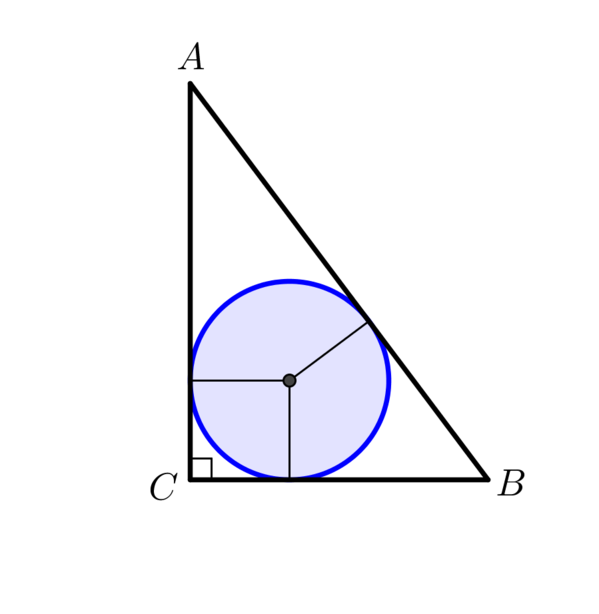
|
|
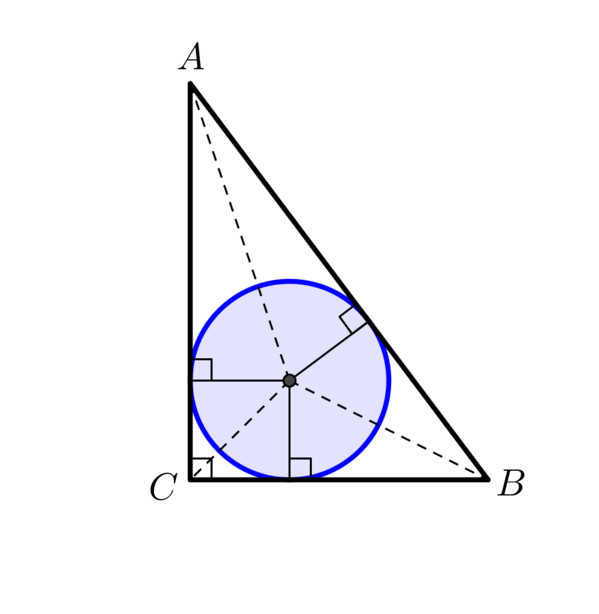
|
|
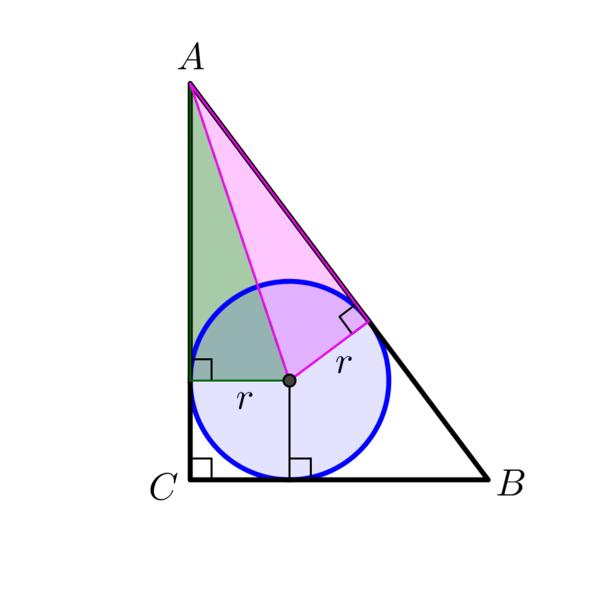
|
|
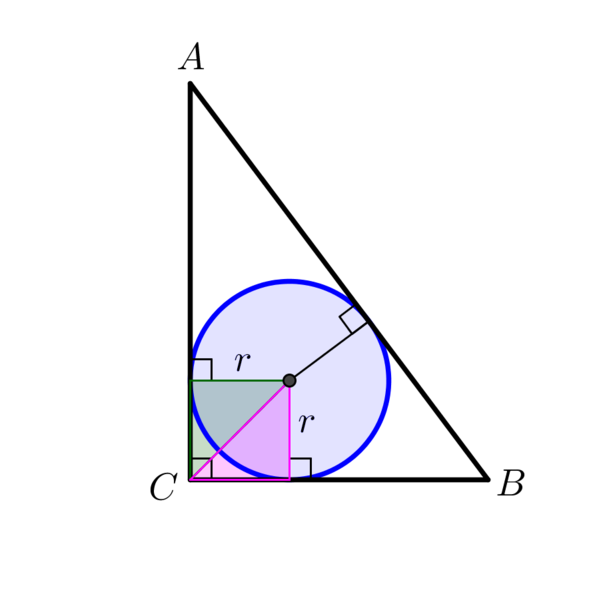
|
|
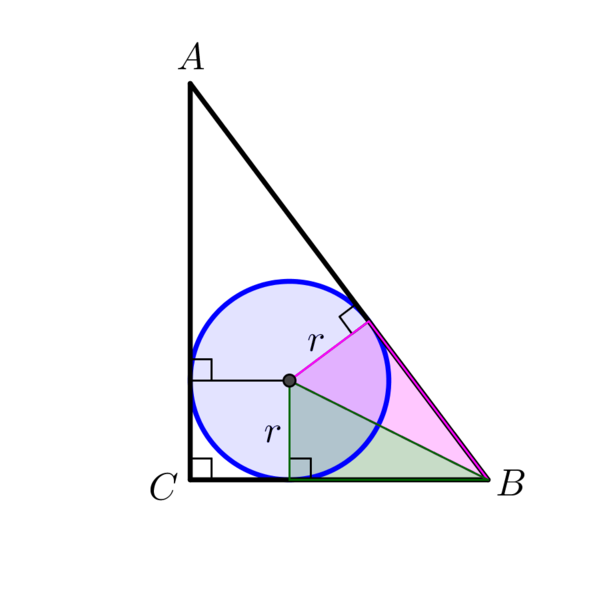
|
|
At this point we can summarise that the centre of the inscribed circle lies at the intersection of the angle bisectors of the outer triangle.
In order to accurately construct the inscribed circle we must therefore first construct any two of the angle bisectors of \(A\), \(B\), and \(C\). If we then construct a perpendicular line from the centre to one edge of the outer triangle, we can use this to set the radius on our pair of compasses and hence accurately construct the inscribed circle.
Many examples of graph drawing software will allow you to directly construct angle bisectors and perpendicular lines, so it would be possible to approach the problem in the same way as on paper.
If this is not possible then we would need to think about the coordinate geometry of the problem, identifying the equation of the inscribed circle. We might choose to do this for a specific example before trying to find a general solution.
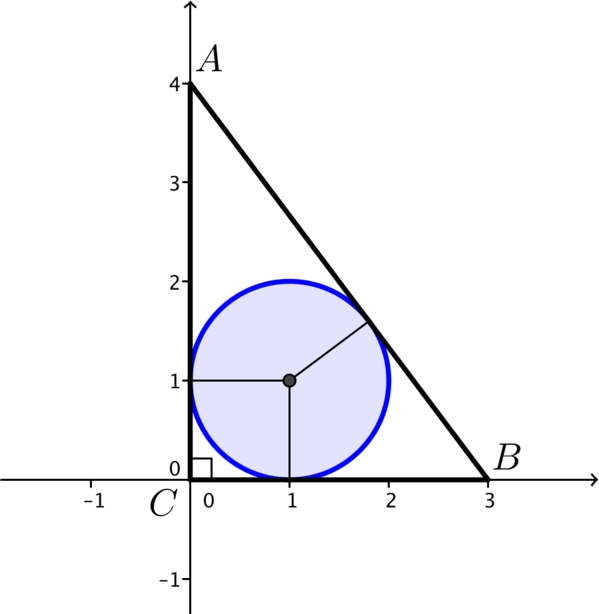
Can you find a right-angled triangle for which the inscribed circle has a radius of \(6\)?
| Diagram | Description |
|---|---|
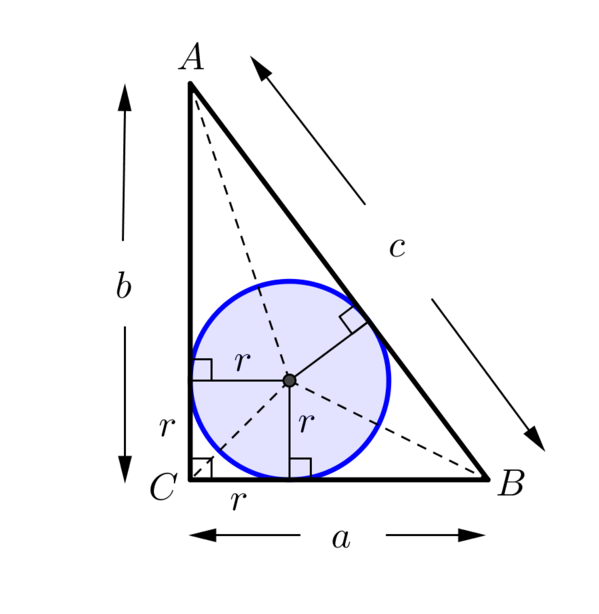
|
|
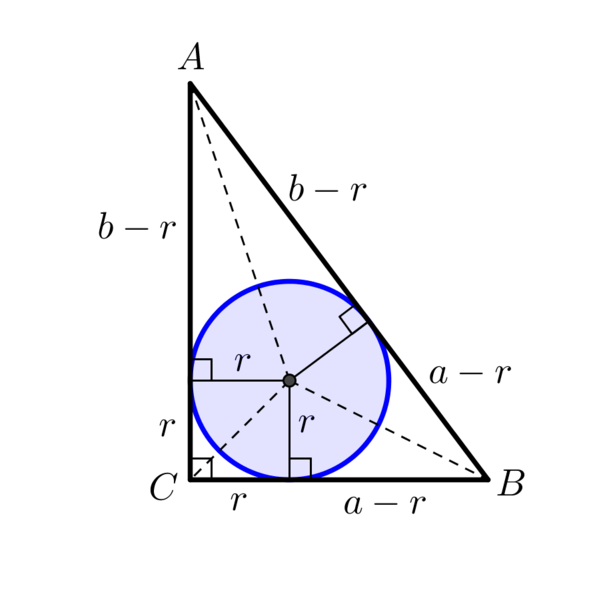
|
|
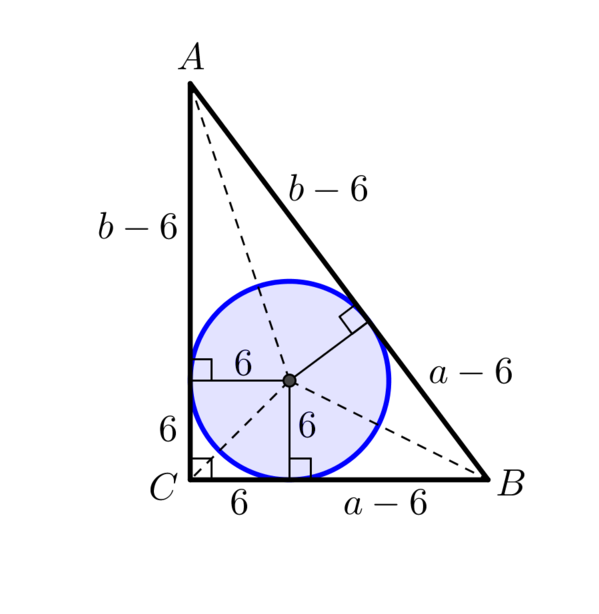
|
|
Now, we also require that outer triangle \(ABC\) is right-angled so we have the second condition that \[c^2 = a^2 + b^2.\]
If we substitute for \(c\) in the above equation we have \[(a+b-12)^2 = a^2 + b^2,\] which can be expanded to \[a^2 + b^2 + 144 + 2ab - 24a - 24b = a^2 + b^2,\] and simplified to \[72 + ab = 12(a + b).\]
We still have two unknown values in this equation, \(a\) and \(b\).
What happens if we assign a value to either \(a\) or \(b\) and use this to calculate the other?
Rearranging the above equation to make \(b\) the subject we have \[b = \frac{12(a - 6)}{a - 12}.\]
If we choose \(a=13\) then we obtain the following solution to the problem.
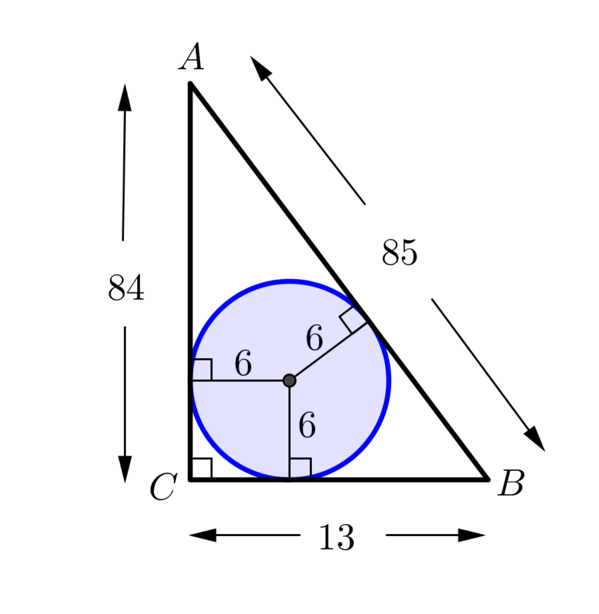
Does it matter exactly which value we select for \(a\) or \(b\)?
Does the value we select need to be an integer?
Why might we have chosen \(a=13\)?
How does the denominator in our formula for \(b\) relate to the diagram, and what can it tell us about the values that we select?
Is your solution unique?
You may have some feeling for this already from the work done above.
You might like to experiment with the interactive diagram below in order to clarify your thinking.
- What stays the same and what changes as you move point \(B\)?
- What constraints are there on the base length of the triangle (line segment \(BC\))?
- What constraints are there on the vertical height of the triangle (line segment \(CA\))?
- How will your findings generalise to a right-angled triangle with an inscribed circle of radius \(r\)?
In our example above we chose the base length to be \(13\). It turns out that the other side lengths are also integer values (\(84\) and \(85\)). This is an example of a Pythagorean Triple.
- How many integer solutions to this problem are there?

